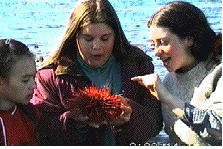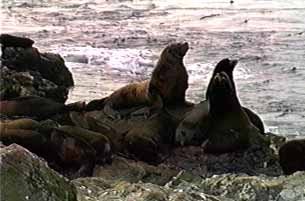GOALS OF THE DIVING SERVICE SCHOOLS PROGRAM:
- To introduce students to the role of marine coastal ecosystems in the culture of First Nations people .a) Ceremonial interaction with the ecosystem
b) Traditional sources of food from rocky intertidal ecosystems.
c) Ensuring sustainability of resources.To enable the students to identify and experience first hand the components of a complete functioning marine ecological system.a) Energy implications
b) Invertebrate adaptations and escape responses of shellfish.
(c) The local food web.To enable students to recognize their role in the stewardship of marine ecosystems.a)The “Adopt an Ecosystem” concept.
b)Oil Spills and our responsibilities
c)Things we throw into the marine environment.
- To demonstrate the role of research in protecting ecosytems.(a) We can all do useful ecological baseline studies
(b) Sustainability of Resources.
(c) Marine Protected Areas
-
| The program we are running consists of the following field lab stations.. click on the photos below for enlargements |
-
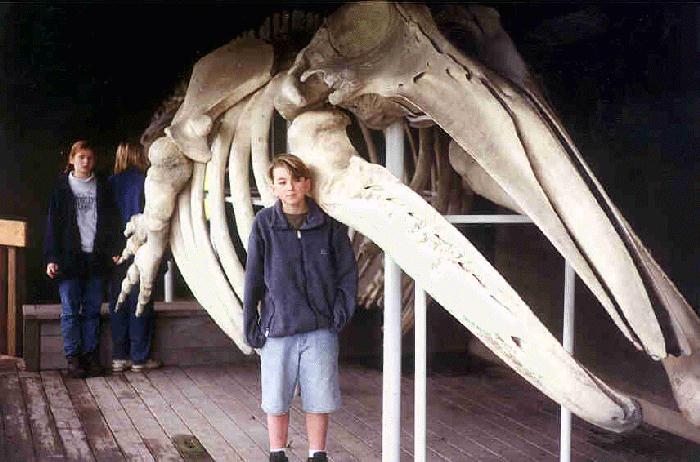 |
2:15 pm Station A: The school group arrives at Lester Pearson College. A Pearson College student in the Diving Service meets the class behind the Pool and provides a worksheet on the gray whale skeleton for our first study station.
(BRING PENCILS) .
|
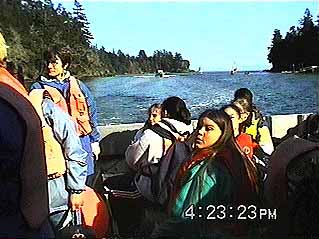
|
2:45 pm – Life jackets are issued, the students proceed to the docks and by this time the divers are prepared to take the students aboard the boats “Hyaku” and “Second Nature”and depart for Race Rocks.
|
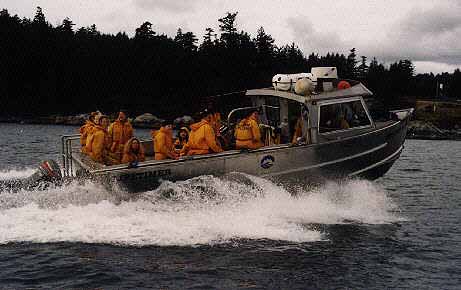 |
Appropriate warm clothing must be worn: (touques, gloves, waterproof boots, warm jackets- it does not matter what you look like. Even on warm days on land, it can be very cold out in the Strait of Juan de Fuca !!)
|
|
|
3:00 pm station b : Entering the Race Rocks Marine Ecological Reserve, we will view the elephant seals, California and Northern sea lions and harbour seals from the boat. Students will be asked questions about seals and sea lions. |
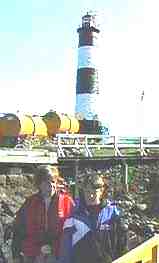
(
|
(The ancestors of Debbie and her son Kyle in this picture were the Eastwoods.–lightkeepers at RR 1891-1919).
3:15pm – Students arrive at Race Rocks. With the Pearson College students as guides, they will go in three groups, to three more field lab stations. |
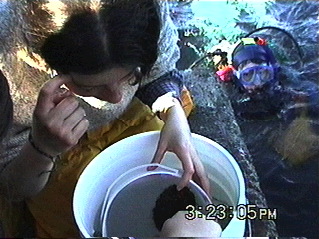 |
Station C : With the divers in the boats and at the dock, they will get an understanding of how Diving may be used as a tool to study underwater life. They will also be able to see some of the facilities of the light station which are necessary to allow humans to be included in this ecosystem |
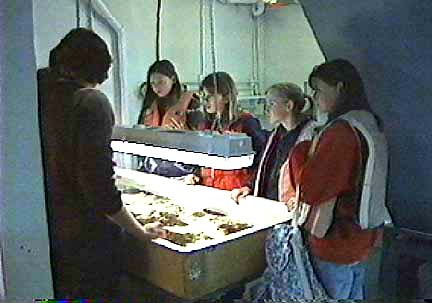 |
Station D : In our Science Lab-Workshop at Race Rocks, they will see specimens in the touch tanks and be able to study feeding, locomotion and escape behaviors on the specimens. It would help if students come prepared with a basic knowledge of some of the characteristics of some the major phylums of invertebrates. |
 Sponges being fed a harmless yellow dye to trace water currents |
4:40 pm– Students return to Pearson College. |
In order to make the experience more enjoyable and informative for everyone, we suggest that the students do some research before coming on the field lab. It would make things more interesting if they could get a basic familiarity with some of the possible species in the different phylums which they will be seeing at Race Rocks.
Some possibilities are :
Phylum Porifera:sponges,
Phylum Cnidaria: sea anemone, hydroids, corals,
Phylum Mollusca: mussels, abalone, scallops,
Phylum Annelida: tubeworms,
Phylum Arthropoda : barnacles, shrimp, crabs,
Phylum Echinodermata: sea stars,sea cucumbers, sea urchins,
Phylum Chordata: sea squirts, marine mammals and marine birds.
|
|
| By researching elsewhere in the Taxonomy Files, they may find reference to some of these organisms that live in the Marine Protected Area – Race Rocks Ecological reserve . |
|
| The students of Pearson College in the diving service program are looking forward to the school labs program. With your full cooperation, enthusiasm and imagination, the school labs will prove to be very informative and exciting for all of us. |
|
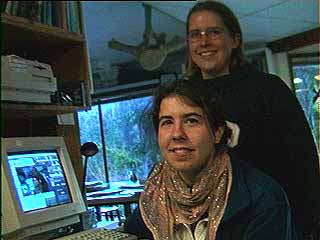 This page was originally designed by Eve from Quebec and Heather from Manitoba. They were the members of the diving activity who co-ordinated the schools labs in the spring of 1997. modified– 03/03/99 This page was originally designed by Eve from Quebec and Heather from Manitoba. They were the members of the diving activity who co-ordinated the schools labs in the spring of 1997. modified– 03/03/99 |
|
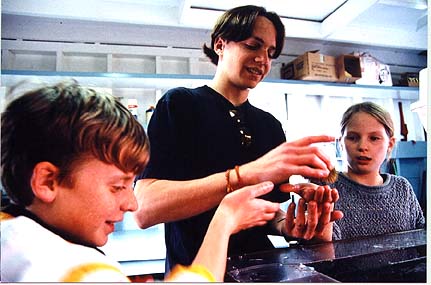 Link to our 1997-98 season of the Diving Service Schools Project.
Link to our 1997-98 season of the Diving Service Schools Project.
